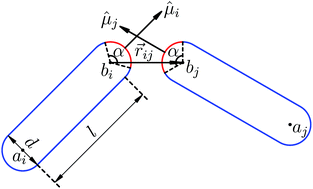Structure and percolation of one-patch spherocylinders
Abstract
When the volume fraction exceeds the threshold, the colloidal particles would form a spanning cluster to realize percolation, which is affected by the shape of the particles, interaction between particles, etc. In this paper, we use the Monte Carlo method to study the structure and percolation of a system of one-patch spherocylinders which have been fabricated recently [Chaudhary et al., J. Am. Chem. Soc., 2012, 134, 12901]. With strong adsorption, one-patch spherocylinders self-assemble into multipods which further make contact with each other to form a percolation network at a high volume fraction, while the percolation network is inhibited by the local structures in a system of one-patch spheres. The main multipods are dipods when the patch angle equals π/3, while they are tetrapods and pentapods when the patch angle equals 2π/3. With enhancing the adsorption, the bigger the patch angle, the more the percolation threshold drops. The orientational order parameter, the distribution of the relative orientation between the nearest neighbors and the probabilities of a spherocylinder owning n adsorbing neighbors have been calculated to analyze the formation and transition of the structures.


 Please wait while we load your content...
Please wait while we load your content...